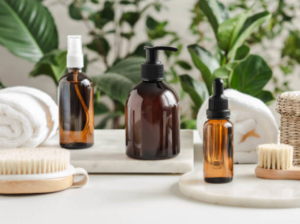In recent years, there has been a significant shift in the beauty industry towards clean cosmetics. With consumers becoming more conscious about what they put on their skin, clean beauty has emerged as a popular choice for those seeking safer and more sustainable alternatives to conventional cosmetics. But what exactly sets clean cosmetics apart from their conventional counterparts? Let’s delve into the differences and discover why clean beauty is more than just a passing trend.
Understanding Clean Cosmetics
Clean cosmetics, also known as natural or green beauty products, are formulated with ingredients that are considered safe, non-toxic, and environmentally friendly. These products are typically free from harsh chemicals, synthetic fragrances, parabens, phthalates, and other potentially harmful substances. Instead, clean beauty brands prioritize using natural and organic ingredients derived from plants, minerals, and other renewable sources.
One of the key principles of clean beauty is transparency. Clean beauty brands are committed to disclosing the full list of ingredients used in their products, allowing consumers to make informed choices about what they apply to their skin. Additionally, many clean beauty brands prioritize sustainable and ethical practices, such as cruelty-free testing, eco-friendly packaging, and supporting fair trade initiatives.
The Rise of Conventional Cosmetics
Conventional cosmetics, on the other hand, have long been the norm in the beauty industry. These products often contain a cocktail of synthetic chemicals, preservatives, and artificial fragrances designed to enhance their texture, longevity, and scent. While conventional cosmetics may offer immediate results and a wide range of colors and formulations, they also come with potential risks to both personal health and the environment.
Ingredients commonly found in conventional cosmetics, such as parabens, sulfates, and phthalates, have been linked to various health concerns, including skin irritation, hormone disruption, and even cancer. Additionally, the production and disposal of conventional beauty products can contribute to environmental pollution and resource depletion, further highlighting the need for cleaner and more sustainable alternatives.
Key Differences Between Clean and Conventional Cosmetics
- Ingredient Quality: Clean cosmetics prioritize natural and organic ingredients that are derived from renewable sources and are free from harmful chemicals. Conventional cosmetics, on the other hand, may contain synthetic ingredients that can pose health risks and environmental concerns.
- Transparency: Clean beauty brands are transparent about their ingredients and manufacturing processes, allowing consumers to make informed choices. Conventional beauty brands may not always disclose the full list of ingredients or may use misleading marketing tactics to promote their products.
- Safety: Clean cosmetics are formulated with safety in mind, avoiding potentially harmful substances that can irritate or harm the skin. Conventional cosmetics may contain ingredients that have been linked to adverse health effects, such as allergies, sensitivities, and long-term health risks.
- Sustainability: Clean beauty brands often prioritize sustainability throughout the entire product lifecycle, from sourcing raw materials to packaging and disposal. Conventional beauty brands may rely on unsustainable practices and contribute to environmental pollution and waste.
Making the Switch to Clean Beauty
If you’re considering transitioning to clean cosmetics, there are several factors to keep in mind. Start by educating yourself about common harmful ingredients found in conventional cosmetics and familiarize yourself with clean beauty standards and certifications. Look for clean beauty brands that align with your values and priorities, whether it’s cruelty-free, vegan, organic, or sustainably sourced.
When shopping for clean cosmetics, pay attention to ingredient labels and avoid products that contain potentially harmful substances such as parabens, sulfates, synthetic fragrances, and petroleum derivatives. Instead, opt for products made with natural and organic ingredients that nourish and protect your skin without compromising your health or the environment.


The Future of Beauty
As consumers become more discerning about the products they use, the demand for clean cosmetics is expected to continue to rise. Clean beauty represents not only a safer and more sustainable alternative to conventional cosmetics but also a movement towards greater transparency, accountability, and ethical responsibility in the beauty industry.
By choosing clean cosmetics, you’re not only investing in your own health and well-being but also supporting brands that are committed to making a positive impact on the planet. Together, we can redefine beauty standards and create a future where clean, conscious, and cruelty-free beauty is the new norm.



